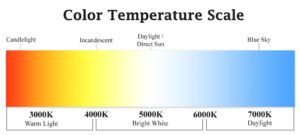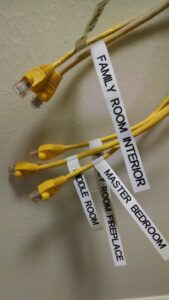First in a three part Dark Sky series
As we round the corner into a new year, many of us are taking time to assess what’s working in our lives and what we want to improve. If a more sustainable or green lifestyle is on your list, then 2010 is the perfect time to commit to eliminating light pollution and supporting the fight to keep our skies dark so we can see the stars, save energy, and minimize some very serious health impacts from uncontrolled light at night.
Light Pollution: An Overview
Light pollution is any adverse effect of artificial light including sky glow, glare, light trespass, light clutter, decreased visibility at night, and energy waste. Denver suffers from serious light pollution caused by uncontrolled light directed up toward the sky. The good news is that light pollution is, in many cases, easier and less expensive to remedy than other types of pollution. And the changes can begin with your own choices about exterior lighting at night.
Examples of Light Pollution
A great example of light pollution is a post-top lantern, often nostalgic in style, which emits light in all directions. Standard “cobra head” streetlights, though they have an opaque top, emit light above a 90 degree angle, which means that they are not Dark Sky compliant. Another is billboard lighting that aims upward. A common residential offender is a lantern style fixture in which the bulbs are visible and the light escapes in all directions.
For local light pollution, look no further than 6th Avenue west of downtown. The floodlights between the access road and 6th Avenue mounted on poles, with regular “cobra head” streetlights below are much brighter than necessary, poorly positioned to light the road, and are a source of glare to drivers as well as the people who live nearby. Driving the Denver metro area, look for these “glare bombs” and post their location in the comment section at the bottom of the article. They’re everywhere.
Why Is Light Pollution a Problem?
Remember lying in the grass as a child and looking up at the stars? Our children in Denver, as well as those of us who enjoy stargazing or taking in meteor showers, like November’s Leonid shower, are missing out on that opportunity. Much more serious implications of light pollution include disruption in human circadian rhythms, sleep cycles, and immune system function, as well as a deleterious effect on animal reproduction. In addition, light directed at the sky is, in all cases, a waste of energy, no matter how exciting it appears. A closer look at the links between light pollution and human health issues will be explored in the other articles in this three part series.
How Can We Make It Better?
In an ideal world, we would no longer attempt to mimic the glow of daylight in our night time world, and instead, would lower all ambient light levels since the dark-adapted eye needs much less light than a bright-adapted eye in order to see.
Here’s the good news. As individual citizens, we can make exterior lighting choices at our homes and workplaces that do not further light pollution. The International Dark Sky Association, which is dedicated to preserving dark skies and pushing for legislation to enforce dark sky compliance in communities, has published a list of fixtures that can be used in all types of outdoor applications without lighting up the night sky, angering neighbors, or wasting energy. Let’s explore some common elements.
- Assess your requirements. Determine where you really need light. Don’t use light as “decoration” or for visual effect at night.
- Direct light where it is needed. Remember that at night, less is more. Concentrate fixtures only where needed. Choose fixtures that can be aimed, and keep them aimed toward the ground.
- Avoid glare. Glare actually compromises safety, as it can render an attacker or intruder invisible. Glare is often caused by an unshielded source, such as a fixture where the bulb is visible.
- Use lower wattage bulbs. More light does not mean more safety. The dark adapted eye can best see at night when there is uniformity of illumination. A bright light against a dark background causes pupil contraction, so the dark background beyond the bright light is invisible.
- Use “full cutoff” fixtures, which means that less than 1% of their light output is emitted above 90 degrees from horizontal.
- Make sure that the light source is not visible when viewing the fixture straight on.
- Keep in mind the motto “Lights Down, Stars Up”.
For some Dark Sky compliant light fixtures, check out the International Dark Sky Association’s approved fixtures or Skykeepers.org approved fixtures. Both websites are filled with information about dark skies and how to take action to minimize light pollution.
Resolve this year to take action on behalf of keeping our skies dark. Think of light pollution as light leak. If light fixtures were water faucets, and any light emitting toward the sky was a drip, we’d fix it immediately. Let’s address light pollution with the same zeal we apply toward other matters of sustainability and energy waste, and encourage those around us to do the same. If your neighbors have bright lights that shine into your bedroom at night, check out this great resource on how to address the topic with diplomacy.
In the next two articles in our three part Dark Sky series, we’ll address more specifics on fixture selection and how light exposure at night affects our health.










